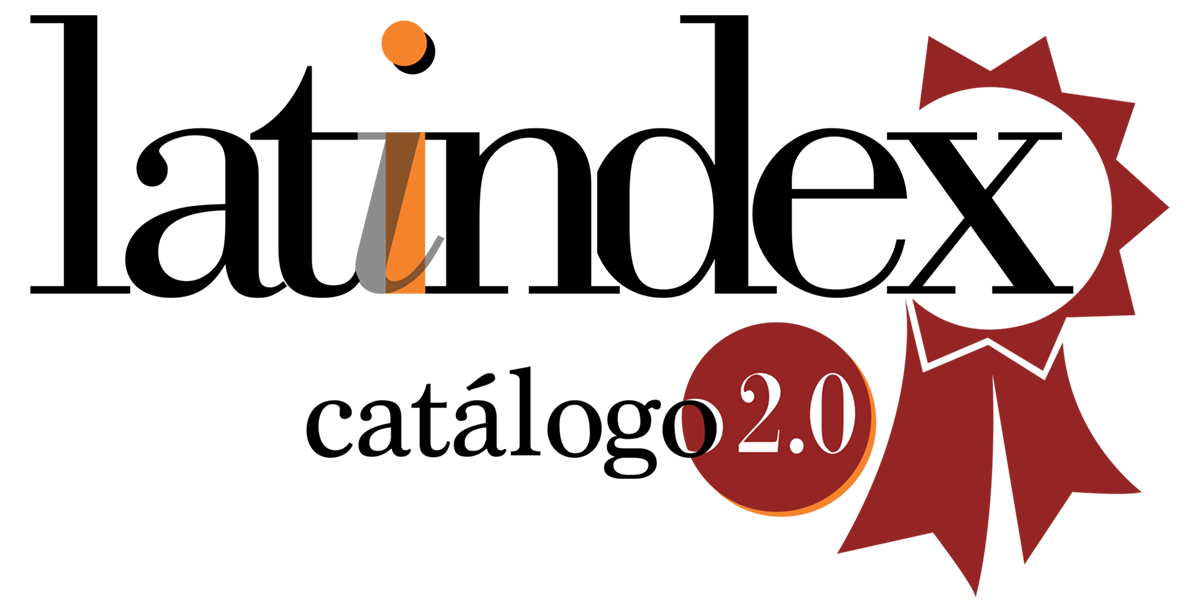EVALUATION OF PM10 PARTICULATE MATERIAL CONCENTRATIONS IN PORTOVIEJO CITY, ECUADOR
DOI:
https://doi.org/10.33936/revbasdelaciencia.v7i3.4240Keywords:
Keywords: atmospheric particles, PM10, inhalable particulate matter.Abstract
This research work evaluated the temporal distribution during the period December-2018 to November-2019, of PM10 atmospheric particles in the Portoviejo city, Manabí-Ecuador, and its relationship with some meteorological parameters. Sample collection was performed using a Graseby Andersen GMW 10 inlet inhalable particulate matter PM10 collection equipment, employing quartz microfiber filters, for 24 hours, at an air 40 ft3/min flow rate. The results´ analysis showed that the annual average PM10 concentrations in the city were 27.03±5.28 µg/m3, which is below the maximum annual permissible limit established by the Ecuadorian air quality standard; likewise, the daily PM10 concentrations did not exceed the permissible limit established by the standard. There is no statistically significant correlation (p=0.01) between the two seasonal periods evaluated, with the value for the rainy season being 26.95±6.38 µg/m3, and the dry season 27.11±4.54 µg/m3. When relating the monthly concentrations of PM10 with the meteorological variables, it was found that there isn´t significant correlation between them (p=0.05), which allows us to understand that the variation in the concentrations of inhalable particulate matter is attributable to a greater influence of the fixed and mobile sources in the study area. The comparison of the PM10 annual average in Portoviejo with other cities in the world allows us to establish that its concentration is similar to that of highly urbanized megacities.
Downloads
References
Alemán, A. A., Orellana, M. R., Alvear, N. G., Arévalo, G. G., Valle, I. G., Moscoso, N. B. (2015). Caracterización química del material particulado PM10 de la zona urbana de Cuenca-Ecuador e investigación de su genotoxicidad e inducción de estrés oxidativo en células epiteliales alveolares A549. Revista de toxicología, 32 (2), 121-126. https://www.redalyc.org/pdf/919/91942717009.pdf
Azua, J. M. (2014). Estudio De Impacto Ambiental Expost Fishcorp S.a. https://www.manabi.gob.ec/wp-content/uploads/2021/06/EIA-JENMER-3.pdf
Celi, S. (2018). Análisis del sistema de transporte público privado de la ciudad de Quito – Ecuador. Revista Espacios. 39 (19), 1-10. https://www.revistaespacios.com/a18v39n19/18391901.html#uno
Coudon, T., Nguyen, C. V., Volta, P., Grassot, L., Couvidat, F., Soulhac, L., Salizzoni, P. (2021). Retrospective Modeling of NO2 and PM10 Concentrations over the Lyon Metropolitan Area (France), 1990–2010—Performance Evaluation, Exposure Assessment and Correlation between Pollutants. Atmosphere, 12(2), 239. https://doi.org/10.3390/atmos12020239
EPA. (2021). Nonattainment Areas for Criteria Pollutants (Green Book). https://www.epa.gov/green-book/green-book-pm-10-1987-area-information
GAD Portoviejo. (2015). Diagnóstico por componentes ambiental, sociocultural, económico, institucional y diagnóstico integrado. Plan de Desarrollo Del Cantón Portoviejo, 149. http://app.sni.gob.ec/sni-link/sni/PORTAL_SNI/data_sigad_plus/sigadplusdiagnostico/1360000200001_FASE 1 DIAGNOSTICO PDGAD PORTOVIEJO_06-04-2016_11-10-05.pdf
INEC (Instituto Nacional de Estadísticas y Censos) Disponible en: http://www.ecuadorencifras.gob.ec/censo-de-poblacion-y-vivienda. Fecha de consulta: 12/05/2021
Kliengchuay, W., Worakhunpiset, S., Limpanont, Y., Meeyai, A. C., & Tantrakarnapa, K. (2021). Influence of the meteorological conditions and some pollutants on PM10 concentrations in Lamphun, Thailand. Journal of Environmental Health Science and Engineering, 1-13. https://link.springer.com/article/10.1007/s40201-020-00598-2
Macías Cedeño, L. E., & Mieles Segura, K. A. (2020). Evaluación de áreas verdes existentes en la zona urbana del cantón Portoviejo”. 67. http://repositorio.unesum.edu.ec/handle/53000/2227
Ministerio del Ambiente del Ecuador. (2015). Acuerdo Ministerial 097-A, Anexo 4 Norma de Calidad del aire ambiente o niveles de inmisión Quito-Ecuador. https://www.ambiente.gob.ec/wp-content/uploads/downloads/2018/05/Acuerdo-097.pdf
Morantes-Quintana, G. R., Rincón-Polo, G., Pérez-Santo domingo, N. A. (2019). Modelo de regresión lineal múltiple para estimar concentración de PM1. Revista internacional de contaminación ambiental, 35(1), 179-194. https://doi.org/10.20937/rica.2019.35.01.13
Mueller W., Loh M., Vardoulakis S., Johnston H.J., Steinle S., Precha N., Kliengchuay W., Tantrakarnapa K., Cherrie J.W. (2020). Ambient particulate matter and biomass burning: an ecological time series study of respiratory and cardiovascular hospital visits in northern Thailand. Environ Health 19:77. https://doi.org/10.1186/s12940-020-00629-3
Neisi A, Vosoughi M, Idani E, Goudarzi G, Takdastan A, Babaei AA, et al. (2017) Comparison of normal and dusty day impacts on fractional exhaled nitric oxide and lung function in healthy children in Ahvaz, Iran. Environ Sci Pollut Res. 24:12360–71. https://doi.org/10.1007/s11356-017-8853-4
Pacheco, H., Díaz-López, S., Jarre, E., Pacheco, H., Méndez, W., Zamora-Ledezma, E. (2020). NO2 levels after the COVID-19 lockdown in Ecuador: A trade-off between environment and human health. Urban Climate, 34, 100674. https://doi.org/10.1016/j.uclim.2020.100674
Pacheco, H., Montilla, A., Méndez, W., Hipatia-Delgado, M., & Zambrano, D. (2019). Causes and consequences of the extraordinary rainfall of 2017 on the Ecuadorian coast: The case of the province of Manabí. Boletín de Investigaciones Marinas y Costeras, 48 (2), 45-70. https://doi.org/10.25268/bimc.invemar.2019.48.2.766
Pothirat C, Chaiwong W, Liwsrisakun C, et al. (2019). Acute effects of air pollutants on daily mortality and hospitalizations due to cardiovascular and respiratory diseases. J Thorac Dis. 11(7):3070–83. https://doi.org/10.21037/jtd.2019.07.37
Querol X. (2018). La calidad del aire en las ciudades: un reto mundial. Editorial: Fundación Gas Natural Fenosa. 1era Edición. Madrid, España. ISBN: 978-84-09-01905-2. Pp. 300. http://www.fundacionnaturgy.org/wp-content/uploads/2018/06/calidad-del-aire-reto-mundial.pdf
Regalado, A., Paccha, E., Álvarez, O., & Montaño, T. (2020). Comportamiento de las concentraciones de PM10 en la ciudad de Loja-Ecuador y su relación con variables meteorológicas. Journal of Science and Research, 5(1), 137-148. https://revistas.utb.edu.ec/index.php/sr/article/view/755
Sarnaglia, A.J., Godoi, L.G., Rodrigues, M.C. (2021). Estimating critical level of PM10 to affect hospital infant admissions in Vitória, Brazil. Stochastic Environmental Research and Risk Assessment, 1-18. https://link.springer.com/article/10.1007/s00477-021-01979-1
Sharma R.C., Sharma N. (2016) Influence of Some Meteorological Variables on PM10 and NOx in Gurgaon, Northern India. Am J Environ Prot. 4(1):1–6. https://doi.org/10.12691/env-4-1-1
Thürkow, M., Kirchner, I., Kranenburg, R., Timmermans, R. M. A., Schaap, M. (2021). A multi-meteorological comparison for episodes of PM10 concentrations in the Berlin agglomeration area in Germany with the LOTOS-EUROS CTM. Atmospheric Environment, 244, 117946. https://doi.org/10.1016/j.atmosenv.2020.117946
UCuenca EP. (2018). “Estudios Integrales de Factibilidad y Diseño Definitivo de los Sistemas de Agua Potable, Alcantarillado Sanitario y Pluvial de las Parroquias Urbanas y Parroquias Rurales del Cantón Portoviejo, Provincia de Manabí.” Portoaguas, 21.1, 75–115. https://ucuencaep.com.ec/proyecto_dieciocho
Valle U., Vinasco S., Pablo J., Nastar C., Teresita R., Espacial V., Concentraciones Y. T. D. E., En D. E. P. M., Área E. L., & Valle U. (2013). Variación Espacial Y Temporal De Concentraciones De PM10 En El Área Urbana De Santiago De Cali, Colombia. Ingeniería de Recursos Naturales y Del Ambiente, 12, 129–141. https://www.redalyc.org/pdf/2311/231130851011.pdf
Downloads
Published
Issue
Section
License
Copyright (c) 2023 Nila Liceth Velez Mendoza, Yulixis Cano, Ligbel Sánchez

This work is licensed under a Creative Commons Attribution-NonCommercial-ShareAlike 4.0 International License.

























